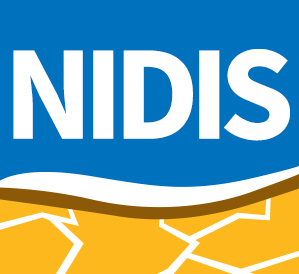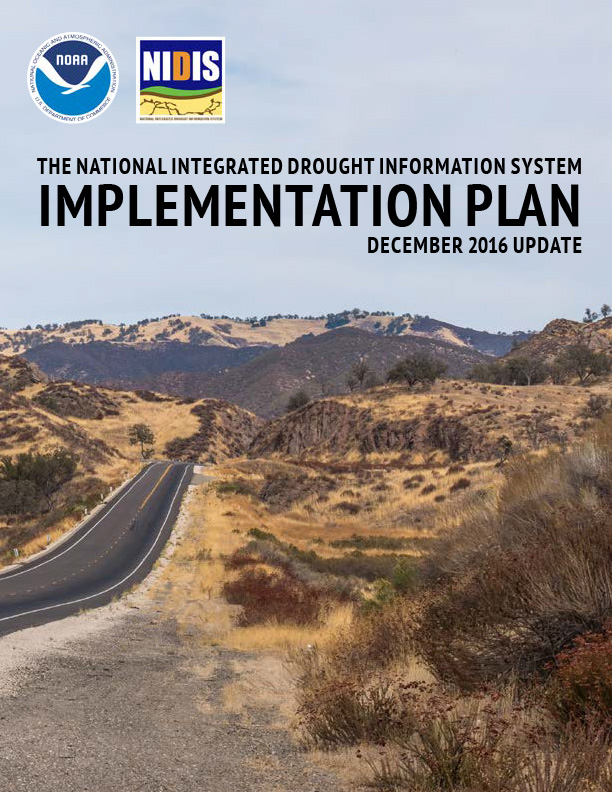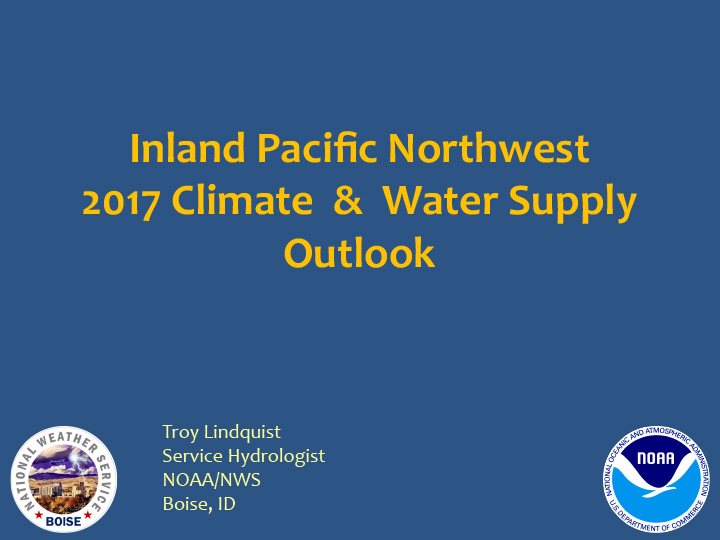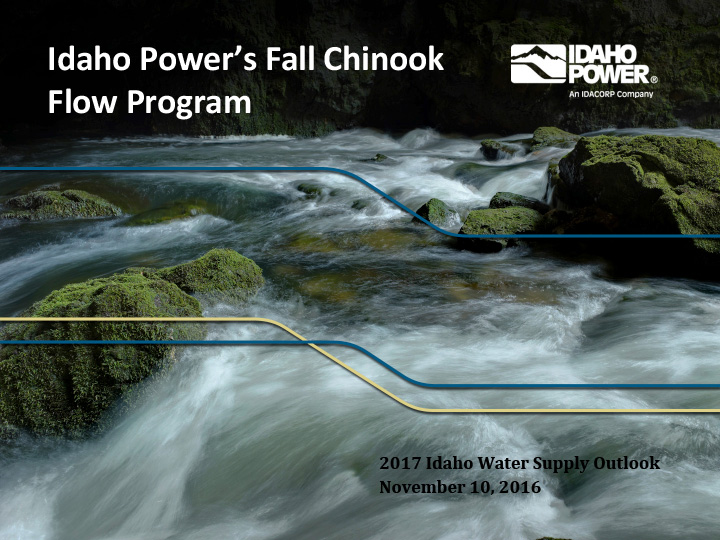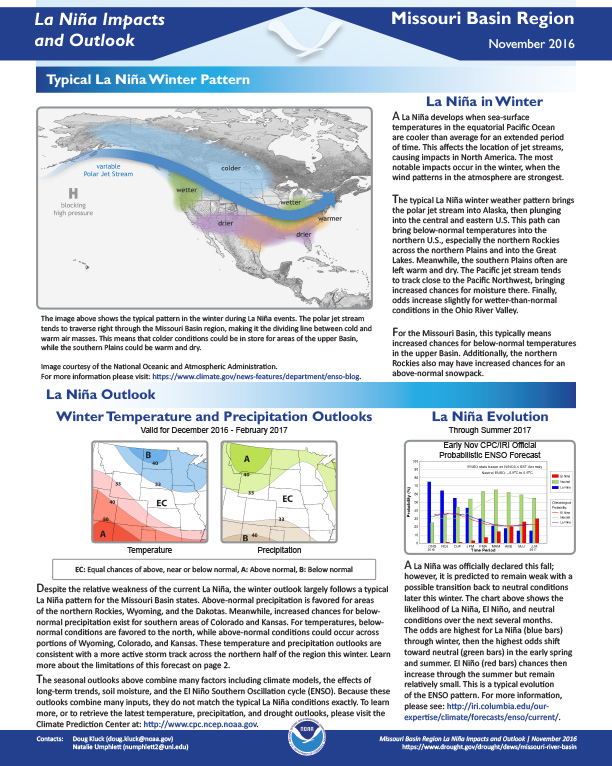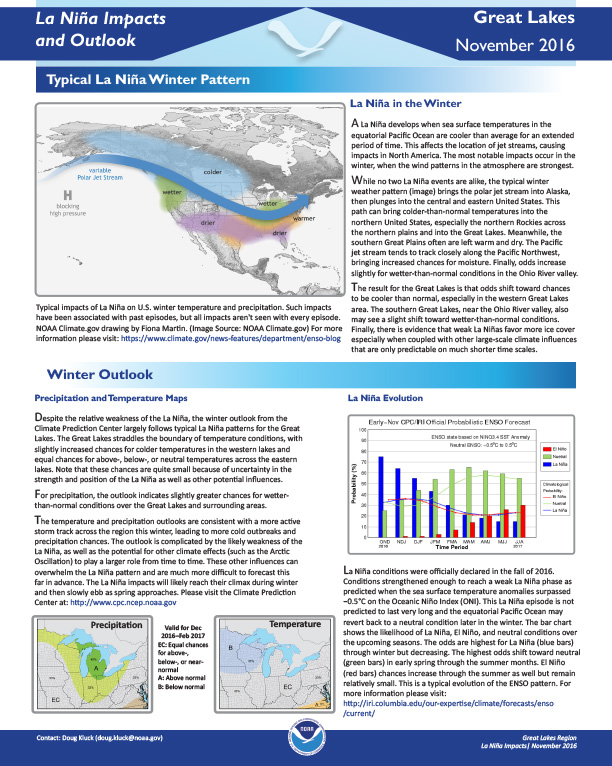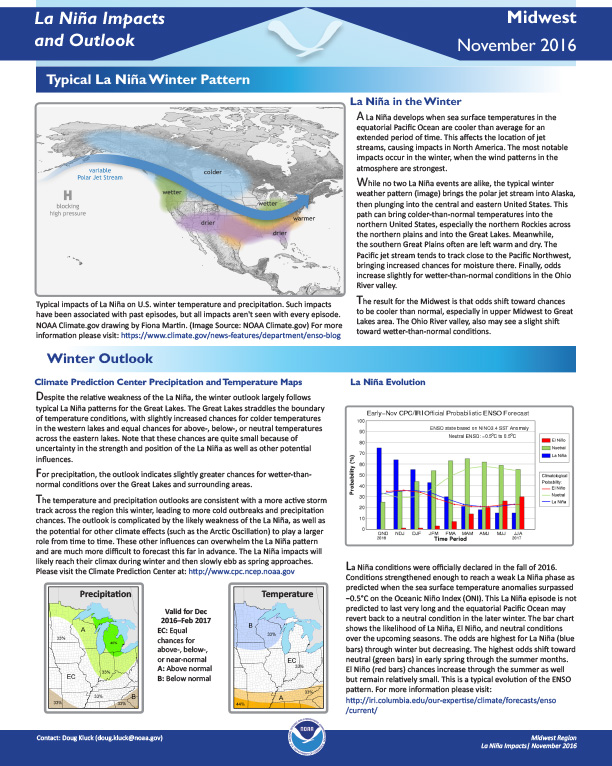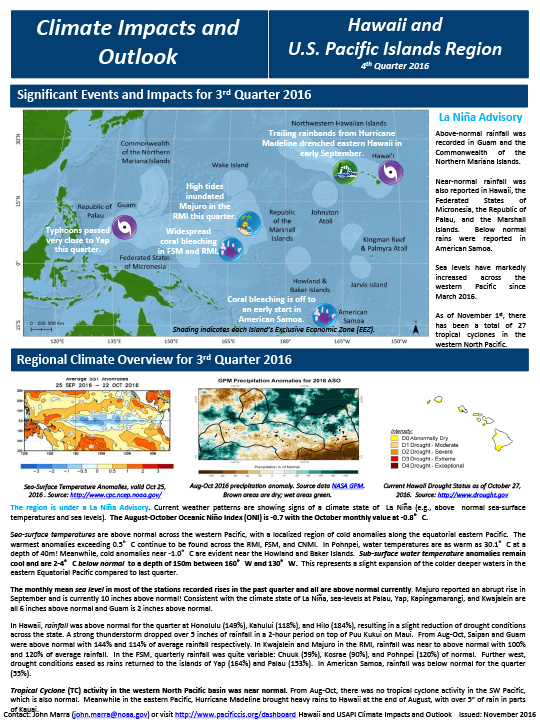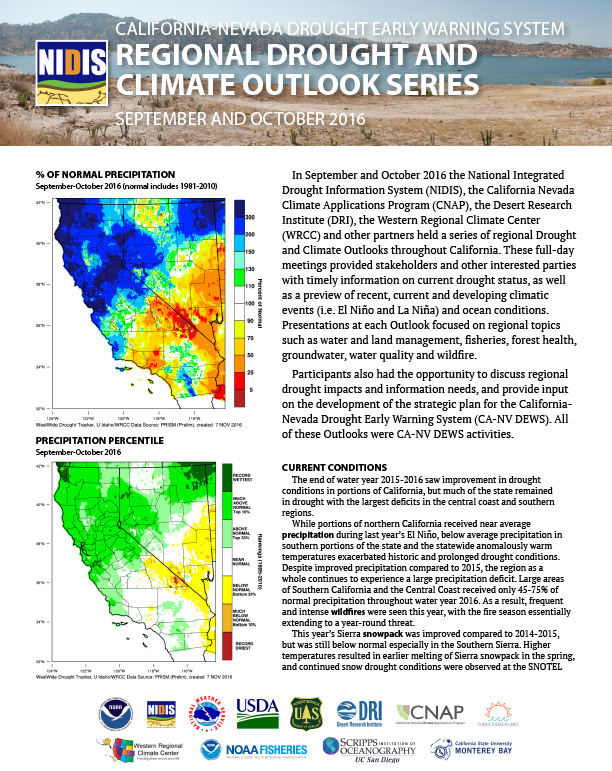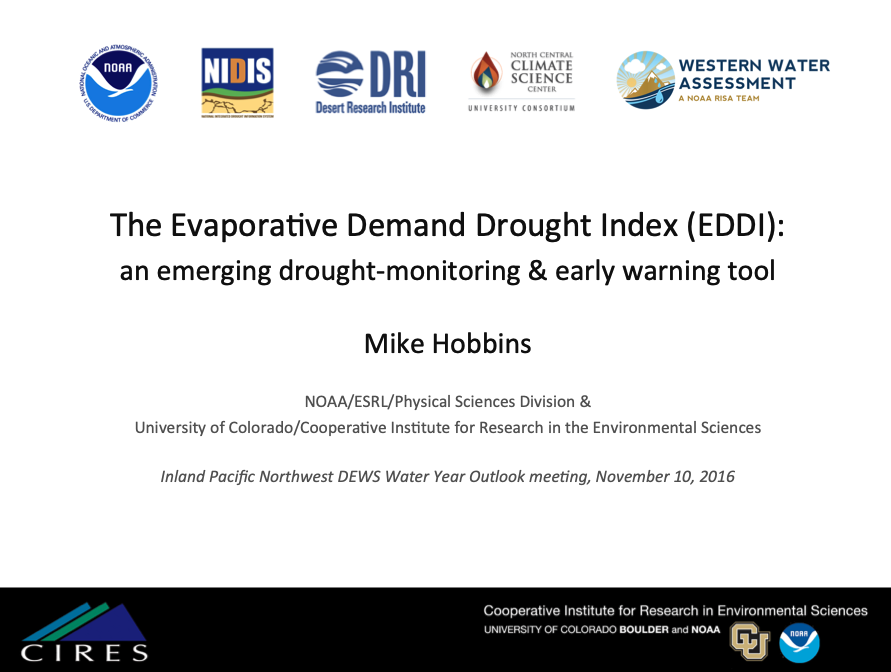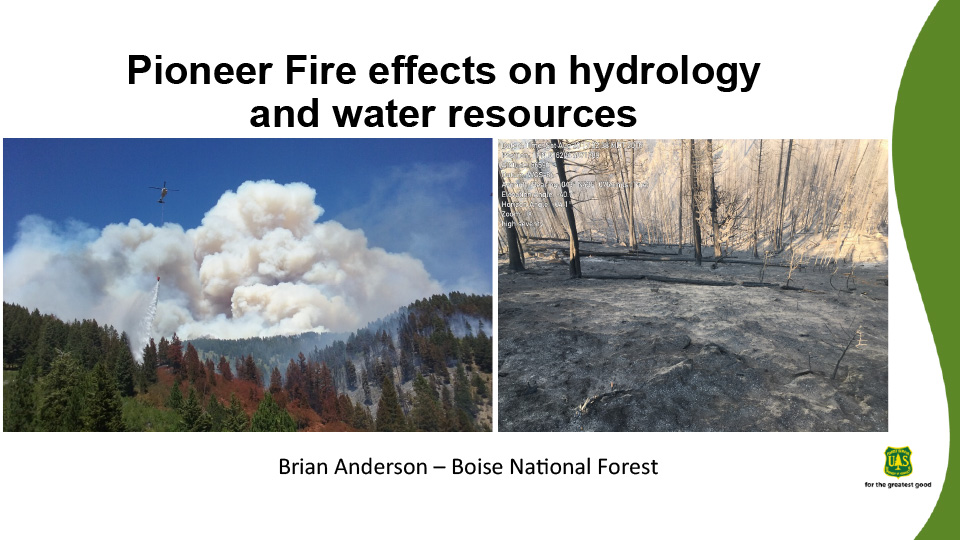For the latest forecasts and critical weather information, visit weather.gov.
This updated National Integrated Drought Information System (NIDIS) Implementation Plan reflects the second phase of NIDIS development and deployment as reauthorized by Congress in 2014. It details NIDIS’s evolution and lessons learned in moving towards a national drought early warning information system, and reflects the thoughtful feedback and participation of NIDIS’s partners.
The 2017 Water Year in Pacific Northwest so far, climate outlook and water supply forecasts. Includes jet stream and La Niña/El Niño information.
Describes Chinook salmon management by Idaho Power in Columbia River Basin.
Defines La Niña; gives outlook for winter temperatures and precipitation; possible effects of La Niña on the Missouri Basin, including agriculture, the economy, and the river itself.
Defines La Niña; gives outlook for winter temperatures and precipitation; possible effects of La Niña on the Great Lakes region, including agriculture, the economy, water levels and lake ice.
Defines La Niña; gives outlook for winter temperatures and precipitation; possible effects of La Niña on the Midwest, including agriculture, the economy, ecosystems and rivers.
Quarterly Climate Impacts and Outlooks for the Pacific Region for August – October 2016. Dated November 2016.
In September and October 2016 the National Integrated Drought Information System (NIDIS), the California Nevada Climate Applications Program (CNAP), the Desert Research Institute (DRI), the Western Regional Climate Center (WRCC) and other partners held a series of regional Drought and Climate Outlooks throughout California. These full-day meetings provided stakeholders and other interested parties with timely information on current drought status, as well as a preview of recent, current and developing climatic events (i.e. El Niño and La Niña) and ocean conditions.
A presentation at the Inland Pacific Northwest DEWS Water Year Outlook meeting, November 10, 2016.
Discussion of evaporative demand (how “thirsty” the atmosphere is), how to calculate the evaporative demand index, and why it matters as a leading indicator of drought.
2016 fire season summary: Pioneer Fire background, Burned Area Emergency Response (BAER), fire effects on watersheds, Forest Service response, anticipated watershed effects.

